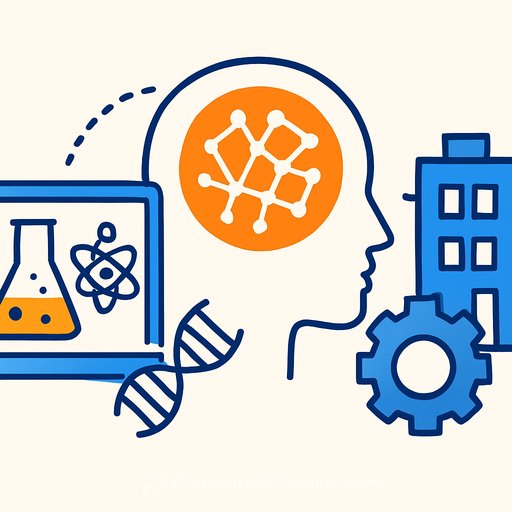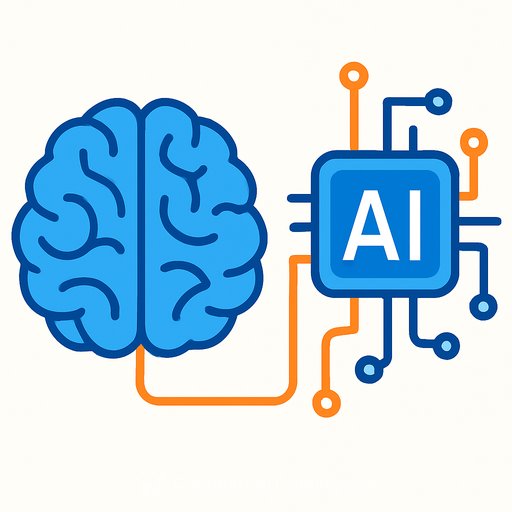GPT-5, Sora, and the Full-Stack Bet: What Altman's Claims Mean for Science
Altman says GPT-5 can run autonomous scientific research and that AI has crossed a scientific threshold. He also framed OpenAI as a full-stack company: research at the base, infrastructure in the middle, and personal AI at the top.
For scientists, the message is clear: models won't just answer questions-they will propose hypotheses, run simulations, and iterate. The bottlenecks shift to compute, energy, data access, and evaluation.
The full-stack strategy: control the stack, ship capability
Altman reversed his earlier stance against vertical integration. The plan: own the model pipeline, the compute layer, and the user interface. He cited partnerships across chips and cloud, and ambitions for massive data centers.
He also pointed to scale on the front end: hundreds of millions of weekly ChatGPT users. The aim at the top layer is personal AI-systems that learn your preferences and adapt across tasks.
Sora and "generated reality"
Sora isn't framed as just video synthesis. It's a move from language prediction to reality prediction-modeling motion, causality, and affect. That changes how we assess evidence, provenance, and trust.
As content creation costs drop, the old 1-10-100 rule (create-comment-consume) breaks. Everyone becomes a producer. Expect new business models around generation volume, ads, and revenue sharing. See Sora details from OpenAI: openai.com/sora.
"AI scientists": claims and concrete use
Claim: GPT-5 can already conduct scientific research autonomously-from proposing mathematical hypotheses to improving bio models and finding regularities in physical simulations. Treat this as a signal, not a guarantee. The practical move is to integrate AI as a collaborator with strict evaluation gates.
Where to apply now:
- Literature triage: exhaustive retrieval, clustering, and contradiction detection across papers and preprints.
- Hypothesis generation: enumerate mechanistic hypotheses; rank by plausibility, novelty, and testability.
- Protocol design: draft experimental steps, controls, and power estimates; auto-generate lab checklists.
- Simulation scaffolding: write baseline code for PDEs/ODEs/ABMs; run parameter sweeps; summarize emergent patterns.
- Results critique: propose ablations, alternative explanations, leakage checks, and replication plans.
- Reporting: produce registered reports, PRISMA flow diagrams, and method cards with provenance.
Guardrails are non-negotiable: frozen datasets for eval, preregistration, blinded benchmarks, and human-in-the-loop review. If an agent proposes a discovery, require independent replication before claiming novelty.
Energy is the new constraint
Altman tied AI's trajectory to energy supply. Short term: natural gas fills gaps. Long term: solar, storage, and advanced nuclear. As training and inference scale, energy becomes a primary variable for capability and cost.
For labs, this means budgeting compute with an energy lens: schedule inference-heavy workloads off-peak, use quantization and distillation, and prefer locality (data near compute) to cut both latency and energy.
Personal AI and the "social interface"
Future ChatGPT variants will adopt stable "personalities" that learn how to interact with you. That can raise productivity, but also risks overfitting to your biases.
If you adopt a personal AI for research, pin a "skeptic profile" that periodically challenges assumptions, flips labels on test items, and proposes null models. Make the default mode: adversarial but constructive.
Governance: minimal tests, maximum focus
Altman argued for focused regulation: safety testing at the super-intelligent tier rather than broad pre-emptive rules across all models. He forecast a flip in copyright incentives-from blocking model use to competing for inclusion.
Action for teams: document licenses, dataset lineage, and consent; use content provenance standards; and set thresholds for what counts as sensitive capability. If a model crosses them, route to red-team and oversight.
Practical playbook for research groups
- Define "AI-in-the-loop" phases: ideation, design, execution, analysis, reporting. Assign metrics and fail-fast checks per phase.
- Stand up a secure retrieval layer over your corpus (ELN, code, instrument logs). Log all prompts, data sources, and outputs.
- Use paired-agent reviews: a proposer agent and a critic agent with disjoint tools and seeds. Human arbitration decides.
- Adopt hard baselines: simple statistical models, linear controls, and synthetic nulls to catch spurious gains.
- Track energy per experiment: report kWh alongside compute hours and cost. Optimize for accuracy per joule.
- Gate autonomy: no unsupervised lab control. Require human approval for reagent orders, instrument writes, or data deletions.
- Publish method cards with provenance, red-team notes, and failure cases. Encourage replication before media claims.
What this means for you
Co-evolution is the theme. Capability rises, society adapts, and practice settles into new habits. Treat AI as a colleague that drafts, critiques, and scales your work-then subject its output to the same standards you demand of a postdoc.
If you're building evaluation suites, the Turing test is a poor target. Aim for domain-specific competence tests with strong baselines and reproducibility. Background on the original idea: Turing test.
Useful resources
Bottom line: If Altman's claims hold, the center of gravity moves from "Can the model do it?" to "Can we verify it, power it, and integrate it responsibly?" Build for that.
Your membership also unlocks:






